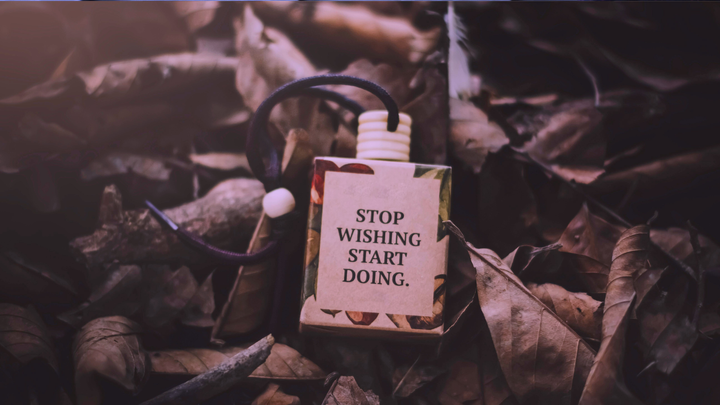How to Build Better Habits That Actually Stick

Have you ever vowed to change your life by building better habits, only to find yourself back to square one a few weeks later? You're not alone, and there's good news. Science has cracked the code on how habits work, why they stick, and how you can use this knowledge to transform your daily routines. Let's explore the fascinating process of habit formation and discover actionable strategies to make lasting, meaningful changes in your life.
The Science of Habits: Why They Matter
Habits are the building blocks of our lives. From brushing our teeth to grabbing that mid-afternoon coffee, these automatic behaviors shape our health, productivity, and overall well-being. But why do habits form in the first place? It all boils down to something called the "habit loop."
The habit loop consists of three parts: the cue (a trigger that sparks the behavior), the routine (the behavior itself), and the reward (the benefit you gain from the behavior). For instance, spotting your running shoes by the door (cue) prompts you to go for a jog (routine), which leaves you feeling accomplished and energized (reward). Repeat this loop enough times, and voilà—you've built a habit!
Neuroplasticity: Your Brain's Secret Weapon
Your brain isn't set in stone; it's more like a sponge, constantly rewiring itself through a process called neuroplasticity. Every time you repeat a behavior, your brain strengthens the neural pathways associated with it. Over time, these pathways become so robust that the behavior feels second nature.
Here's the exciting part: the same mechanism that cements bad habits can be harnessed to create better ones. By understanding how your brain works, you can take advantage of this process to break free from old patterns and replace them with healthier routines.
Actionable Strategies for Building Better Habits
Enough theory, let's get practical. Here are some science-backed strategies to help you create habits that last.
1. Start Small
Rome wasn't built in a day, and neither are habits. Instead of overhauling your entire life, focus on tiny, manageable changes. Want to start exercising? Begin with a single push-up. Hoping to read more? Commit to just one page a day. These micro-habits are easy to stick to, and over time, they snowball into bigger changes.
2. Leverage Habit Stacking
Habit stacking involves piggybacking a new habit onto an existing one. For example, if you already brush your teeth every morning, you could add a quick meditation session right afterward. The existing habit acts as a cue, making it easier to remember and stick to the new behavior.
3. Use Environmental Design
Your environment plays a huge role in shaping your habits. Want to eat healthier? Keep fruits and veggies within arm's reach and hide the junk food. Trying to cut down on screen time? Charge your phone in another room. By designing your surroundings to support your goals, you set yourself up for success.
4. Track Your Progress
What gets measured gets managed. Whether it's through a journal, an app, or a good old-fashioned checklist, tracking your habits helps you stay accountable and see how far you've come. Plus, there's something deeply satisfying about checking off that box every day! Consider using tools like the Habit Tracker with Streaks from the Conqur app, which visually tracks your progress and reinforces your commitment to building better habits.
5. Focus on Identity-Based Habits
Instead of focusing solely on outcomes, think about the kind of person you want to become. For example, instead of saying, “I want to lose 10 pounds,” frame your goal as, “I'm the type of person who makes healthy choices.” This shift in mindset helps align your actions with your identity, making the habit feel more intrinsic and rewarding.
Overcoming Common Challenges
Let's face it, habit formation isn't always smooth sailing. Here's how to tackle some of the most common roadblocks.
Breaking Through Limbic Friction
Ever feel like there's an invisible force holding you back from starting something? That's limbic friction, the resistance your brain feels when faced with change. To overcome it, lower the activation energy required to start. For example, if you want to work out, lay out your gym clothes the night before. Make it so easy that starting feels almost effortless.
Getting Back on Track After a Slip-Up
Newsflash: nobody's perfect. Missing a day (or three) doesn't mean you've failed. What matters is how quickly you bounce back. Treat slip-ups as learning opportunities rather than excuses to give up. Remember, consistency beats perfection every time.
The Role of Technology in Habit Formation
In today's digital age, technology can be both a blessing and a curse when it comes to habits. On one hand, habit-tracking apps provide structure and accountability. On the other hand, excessive screen time can reinforce bad habits like procrastination.
The key? Use technology mindfully. Set boundaries, disable non-essential notifications, and choose tools that align with your goals. For example, the Pictogoal feature in the Conqur app transforms habit-building into a visual journey, motivating you to stay consistent by gradually revealing an inspiring image as you complete milestones.
Final Thoughts: Make Better Habits Your Superpower
Habits are more than just routines, they're the foundation of who we are and who we aspire to be. By understanding the science behind habit formation and applying these strategies, you can take charge of your life and create a future you're excited about.
So, what's the first small step you'll take today? Remember, every big change starts with a single, intentional action. The journey to better habits begins now. Explore tools like the Conqur app to make habit-building easier and more rewarding. Your future self will thank you!


